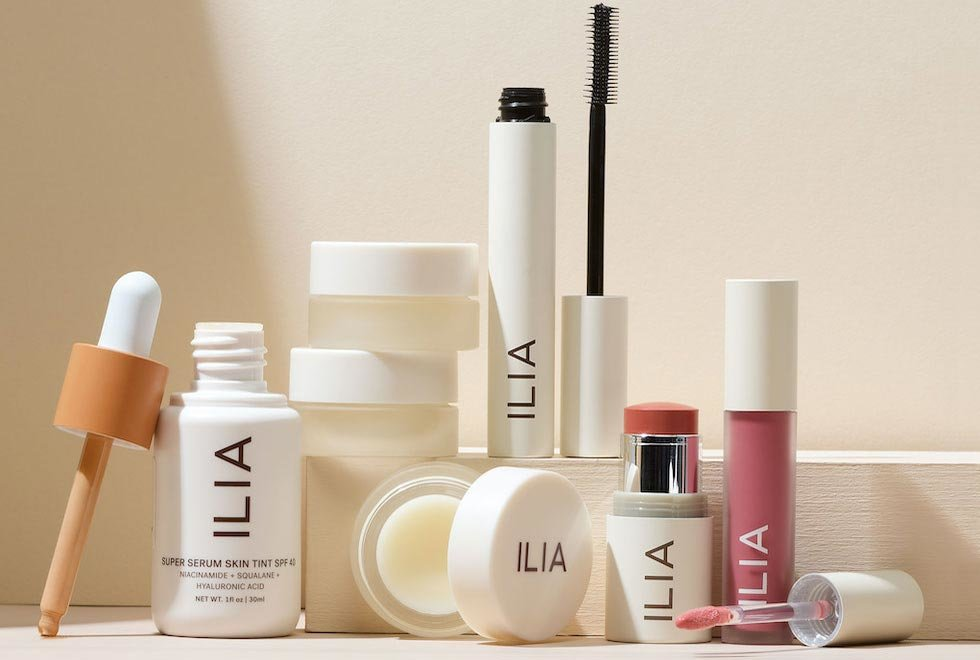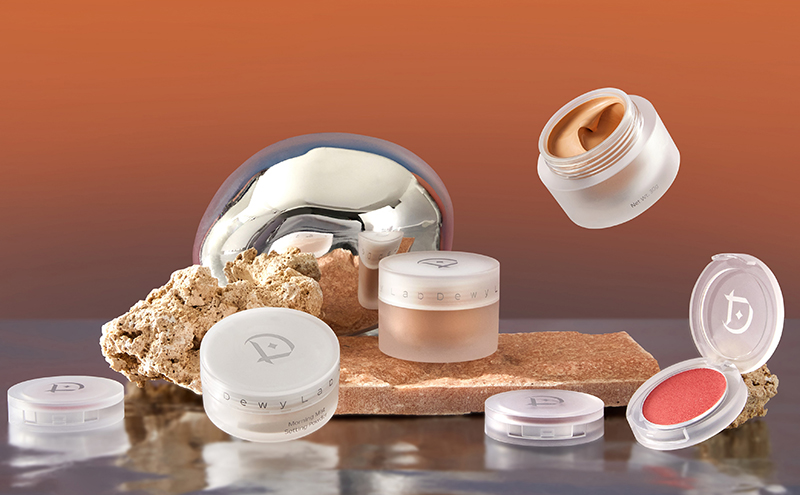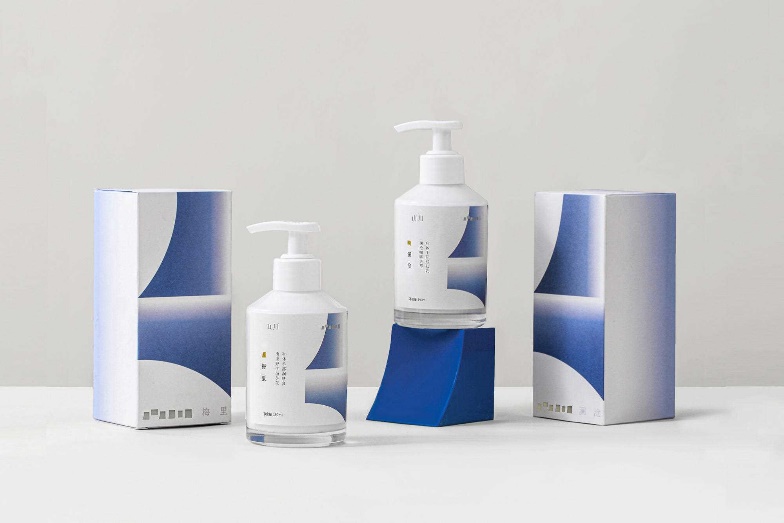Market updates
1. According to data from Kuaishou, over 1000 leading brands from various industries entered the Kuaishou e-commerce platform in 2021. The GMV of brand self-run live-streaming increased by 1073%. Also, Kuaishou cut its link to another two e-commerce giants, Taobao and JD.com, implying that Kuaishou is building its own e-commerce ecosystem.
2. In 2021, the GMV of Tiktok e-commerce reached 6 billion yuan, 70% of which was from Indonesia.
Company dynamics
1. On February 1, high-end skincare brand Fresh’s parent company Famille C announced the acquisition of clean beauty brand ILIA. Founded in the U.S. ten years ago, ILIA now has expanded to multiple distribution channels, including Sephora, Credo, Space NK, Mecca, etc. The data from Brandessence Market Research shows that the global clean beauty market recorded 5.44 billion dollars in 2020 and will reach 11.56 billion dollars in 2027 with an annual compound growth rate of 12.07%.

Products from ILIA
2. Italian fashion brand Dolce & Gabbana will create a beauty business department to manufacture and sell its own beauty products. In the past 30 years, it cooperated with Japanese cosmetic company Shiseido to develop its beauty business. This new department will focus on fragrance and skincare business.
3. Synthetic biotech skincare brand STEE HILL LAB (溯华) completed its Angel round of financing. As a high-end skincare brand, STEE HILL LAB focuses on one unique ingredient, C3 Recombinant Collagen, and has developed multiple products based on this ingredient.
4. Indonesian makeup brand Y.O.U gained 40 million dollars from seven investors, including several Chinese investors. As a new brand founded in 2018, Y.O.U now has expanded its business to Malaysia, Thailand, and the Philippines. Its supply chain is mainly based in China, giving it a competitive advantage.
5. Shiseido will launch a DNA skin test program named BEAUTY DNA PROGRAM in March 2022 to provide customized beauty experience for its consumers.
6. HERA, a high-end skincare brand from Amorepacific Group, has closed its counters and WeChat mini program. However, its Tmall store will remain open. This brand is the third brand from Amorepacific that has reduced its Chinese business. The former two are Innisfree and etude house.
7. Clean beauty brand Dewy Lab (淂意) completed its Pre-A round of financing. One of its investors is Little Red Book, a top social media platform in China. After launching its first product in January 2021, Dewy Lab has gained three rounds of investment within one year.

Products from Dewy Lab
8. Spanish beauty giant Puig group is accelerating to expand its business in China. It expects its sales in China to account for 25% of the total sales in 2025. Currently in the Chinese market, Puig’s makeup brand Charlotte Tilbury and sunscreen brand ISDIN are popular. High-end fragrance brands Penhaligon’s and L'Artisan Parfumeur have successfully developed some hit products and now even become representatives of new rising niche fragrances among consumers.
9. Hermes plans to expand its cosmetic business further by launching its first base makeup product line, covering foundation, pressed powder, etc. Axel Dumas, the CEO of Hermes, suggests that developing a beauty product line is a long-term plan for the Group.
10. Domestic natural skincare brand Shanchuan (山川) gained several million yuan from investors. Its biggest selling point is natural ingredients and its expression of Chinese culture. Some media calls it the “Florasis” in the skincare sector.

Products from Shanchuan
Data browse
1. According to the latest report from Kantar Worldpanel, sales of fast-moving consumer goods (FMCG) in China increased by 3.1% year-on-year in 2021 and 3.7% compared to 2019. The overall market has gradually recovered from the impact of the epidemic and achieved a staged recovery.
2. According to data from the General Administration of Customs (GACC), the total import value of beauty products and toiletries in China was 161.296 billion yuan, a year-on-year increase of 15.2%. It is worth noting that the growth rate of cosmetics imports once reached 67.5% in 2018, which was a peak. From then on, the growth rate has continued to slow down. In 2021, it hit a new low in the past seven years.
3. According to data released by the National Bureau of Statistics, the total retail sales of cosmetics in 2021 reached 402.6 billion yuan, setting a new record. However, the growth rate continued to decline. As for the monthly performance, the year-on-year growth rate was lower than 4% for 4 months. In August, there was zero growth. It can be called a very sluggish year for China’s cosmetics industry.
4. The beauty industry is slowing down in developing new products. Until February 2022, there have been 13,999 new product filing on the system of National Medical Products Administration, a year-on-year decrease of 75%.
Financial results
L’Oreal 2021
Sales reached 32.28 billion euros, increasing by 16.1% like-for-like, the highest growth in the recent 33 years. Compared with 2019, the figure increased by 11.3%. Operating profit was 6.16 billion euros.
In mainland China, L’Oréal reported strong double-digit growth in 2021, twice that of the beauty market.
In terms of divisions, L’Oréal Luxe recorded strong growth at 20.9% like-for-like, and it became the Group’s largest Division, with remarkable success in fragrances. The Active Cosmetics Division ended the year with exceptional growth at 31.8% like-for-like. The Division significantly outperformed the booming derma cosmetics market in 2021, with health becoming a core concern for consumers.
Estee Lauder 2022Q2
Net sales were 5.54 billion dollars, an increase of 14%. Net earnings were 1.09 billion dollars.
In mainland China, net sales growth was led by skincare and fragrance. The company’s brands performed well in the 11.11 Global Shopping Festival, ranking #1 across beauty, luxury beauty, and fragrance.
P&G 2022Q2
Net sales were 21.0 billion dollars, increased by 6%. Net earnings were 4.2 billion dollars, up 9%.
Beauty segment’s organic sales increased two percent versus a year ago. Skin and Personal Care organic sales increased in low single digit primarily driven by volume growth in Personal Care due to innovation, market growth, and pricing, partially offset by negative product mix.
Johnson & Johnson 2021
Sales in 2021 reached 93.8 billion dollars, increased by 13.6%. Its adjusted earnings were 26.2 billion dollars, up 22.2%.
Consumer Health Worldwide reported sales increased by 4.1%, primarily driven by Aveeno, Neutrogena, TYLENOL, Aveeno baby, etc.
Amorepacific 2021
Revenue was up 8.0% to 5.3 trillion won, and operating profit was up 136.4% to 356.2 billion won.
In China, its revenue increased by a single digit. Sulwhasoo sales grew around 50%, with strong online sales resulting from promoting high-end lines. Laneige sales grew by double digit due to enhanced functional skincare portfolio and strengthened partnerships with online platforms.
LG H&H 2021
Beauty business sales decreased 0.4% YoY to 4.4 trillion won, and operating profit increased 6.5% YoY to 876 billion won.
In China, the customer base has been widening due to the active expansion into new channels other than Tmall, JD, or VIP. Meanwhile, the ‘Whoo’ brand reinforced its ultra-high-end lineup such as ‘Cheonyuldan’ and ‘Hwanyu’ further to strengthen its luxury positioning in the global beauty market.
Shiseido 2021
Net sales recorded 1035.2 billion yen, up 12%. Net profit was 42.4 billion yen.
In mainland China, e-commerce business increased by 30%. The Prestige products kept a high growth, whose total sales increased 1.4 times in 2021. Shiseido aims for full recovery in 2H in this market.
KAO 2021
Net sales were 1418.8 billion yen, up 2.7%. Operating income was 143.5 billion yen, a decrease of 32.1 billion yen compared with the previous fiscal year.
In terms of its cosmetics business, it continued to remain strong growth in China, mainly through the e-commerce business. Two brands were especially popular in this market, freeplus, a product containing Japanese and Chinese botanical extracts, and Curél, a derma care brand. Also, the Kao Group began a full-scale rollout of its prestige cosmetics in the Asian market, including the start of duty-free sales on Hainan Island.
Bloomage biotech 2021
The company achieved an operating revenue of 4.948 billion yuan, an increase of 87.93% over the same period of the previous year; the net profit was 782 million yuan, an increase of 21.13% over the same period of the previous year.
The revenue of functional skincare products increased by approximately 146.57% year-on-year.
More details in ChemLinked’s article.
Regulatory compliance
1. On February 21, 2022, eight departments (including the Ministry of Finance, National Development and Reform Commission, Ministry of Industry and Information Technology, Ministry of Ecological Environment, Ministry of Agriculture and Rural Affairs, Ministry of Commerce, General Administration of Customs, and Endangered Species Import and Export Management Office of PRC) jointly announced to optimize the List of Import Goods through Cross-border E-commerce. The new list will be effective starting from March 1, 2022. More details on ChemLinked.
2. Starting from February 21, 2022, a draft of Key Points for Reviewing of General Cosmetics Safety Assessment Report (Simplified Version) (hereinafter referred to as “Key Points”) proposed by the National Medical Products Administration (NMPA) has been under discussion among the cosmetic industry insiders. National Institutes for Food and Drug Control, provincial MPAs, and inspection centers are required to provide feedback before March 31.
The Key Points sets a unified standard for the review of the safety assessment report, and has great reference significance for companies to prepare safety assessment report in a standardized manner. More details on ChemLinked.
3. China National Medical Products Administration (NMPA) released the finalized Measures for the Management of Cosmetic Adverse Reaction Monitoring (the Measures) on February 21, 2022, which will take effect on October 1, 2022.
The Measures is China’s first regulation specifically for the management of cosmetic adverse reaction monitoring. It consists of 7 Chapters and 47 Articles, stipulating systematic requirements for cosmetic adverse reaction monitoring from the aspects of responsibilities and obligations, adverse reaction reporting, analysis and evaluation, as well as adverse reaction investigation, supervision and management, etc. More details on ChemLinked.













